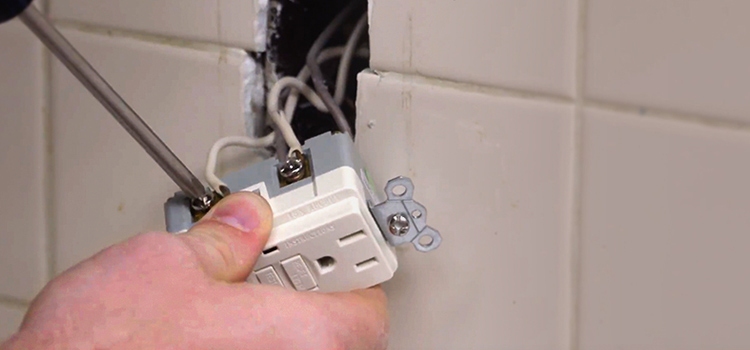Outlet Has Power but Doesn’t Work
A few things can cause the situation where the outlet has power but doesn’t work. The main three reasons are fried wires, broken connections, and corroded wires. Each has its own fix.
Sometimes you may need to check other connections to avoid other accidents depending on what you find in the wire. So we will go over each of the problems and discuss them accordingly to let you know how to tackle each of the problems.

Problem: Outlet Doesn’t Work Despite having Power
A non-functional outlet is more common than anyone thinks. Almost every house has at least one broken outlet. A broken outlet can be caused by many problems. Most of the time the power will be intact but plugging utensils into it won’t work. So we will go over some of the most common ones.
Corroded Wires
One of the main culprits for this problem is the corroded wires. This problem is mainly seen in the old houses. Because the wires have been inside the wall for a long time it starts to corrode. Thus the connection becomes weak.
So the power still runs through the wires but it is not strong enough to run any utensils. You can open up the board to check on the wires. If the wires are corroded then you will see it gets thin in some places and it will feel brittle.
Corroded wires don’t always happen because it is old. Sometimes if the wires get exposed to some kind of chemical it starts to corrode. So, new wires can also corrode if it gets exposed to certain chemicals.
If you have a corroded wire situation it is better to figure out the reason for corroding. Or else it will keep happening. Then call an electrician to figure out all the corroded wires and replace them.
Fried Wires
Often if the wires become loose for some reason it gets burned to carry the power. But a fried wire can be very hazardous for a building. It can easily cause a fire if not careful.
So if you find any burnt marks around your outlet or after opening the board with a screwdriver, you may find the wire is burnt then it is because the wire has been fired because of a loose connection.
This is usually a one off thing. But for safety, you should check for any other burnt wires. To fix the problem, replace the burnt wires and connect the wires properly with a good connection. You can use the connectors that can be found in the market for this purpose.
Pest Infestation
If your house has a pest problem then the problem could be because of the pests. Pests often chew through the wires making them break or loosen the connection. This is mainly a mice problem.
So if you open the wall mount to find chewed wires, give the pest control a call. Then replace the chewed wires.
Other Problems
Of course, there are many other reasons for the same problem. It can often be because of a faulty outlet. Then changing the outlet will fix the problem. You can check the power inside the outlet by using a tester.
It can also be because of a broken connection that wasn’t properly connected to the outlet. In this case, connecting it properly will fix the problem.
Troubleshooting the Outlet || Opening Wall Mount & Repair
The problem with outlet is hard to detect without opening the wall mount and checking inside. You can use the tester from outside to check if the outlet is faulty or not. But anything else, you have to open the wall mount.
Before opening the wall mount to check inside, make sure to cut the connection of that room either by removing the main circuit breaker or by powering off the switch at the circuit breaker. That way there is no risk of getting shocked.
After the power is down, use a screwdriver to open the mount. Then use a flashlight to check the wires inside to find out what the problem is.
For repairing, keep the connection off and cut off the damaged portion of the wire. Then use one side of the new wire and connect it in front of the old one. Use the other side of the wire for connecting to the outlet. For connecting, you can use the manual method or use a plastic connector which will make the job easier.
Conclusion
The broken outlet may be common but the fix is also very easy. If your outlet has power but doesn’t work, you will need to check inside the mount to see if anything is wrong with the wires. Then finally change the outlet if nothing else has a problem.
Subscribe to our newsletter
& plug into
the world of circuits